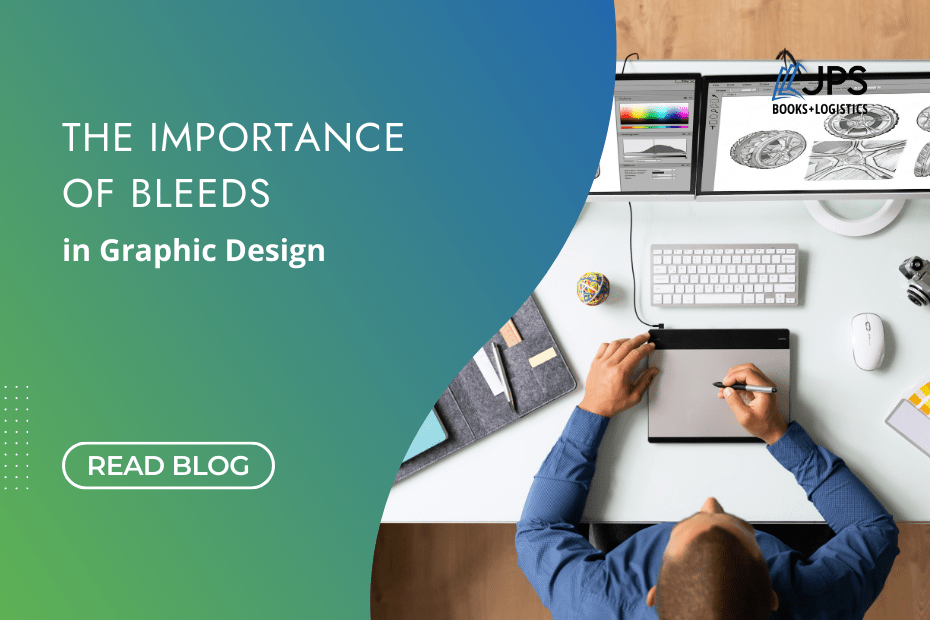In the world of graphic design, attention to detail is paramount.
From choosing the right fonts to selecting vibrant colors, every decision contributes to creating visually striking results. One often overlooked aspect that can take book and workbook designs to the next level is the use of bleeds!
In this blog, we’ll delve into the significance of bleeds in graphic design, exploring why they matter and how they enhance the overall aesthetics and professional appeal of printed materials.
What Are Bleeds?
In the printing industry, a bleed refers to the area of a design that extends beyond the final trim size of a printed piece.
It ensures there are no unwanted white borders or edges after the piece is trimmed. A small detail, yes—but bleeds are crucial when it comes to achieving a seamless and professional look for your printed materials!
Why Bleeds Matter in Printing & Publishing
Seamless Printing Experience
Bleeds ensure a seamless printing process by accounting for minor shifts during trimming. When designs extend beyond the trim edge, it prevents any unsightly white borders from appearing, resulting in a polished and refined final product.
Enhanced Visual Impact
Incorporating bleeds allows designers to create striking visuals that extend to the very edge of the page. This technique eliminates any restrictive boundaries, enhancing the overall visual impact of the design and captivating the reader’s attention.
Professionalism and Attention to Detail
Simply put, the presence of bleeds in a design showcases a designer’s professionalism and commitment to delivering high-quality printed materials. The gold standard is typically 1/8″ additional on all sides. By paying attention to every aspect, including the bleeds, designers demonstrate a meticulous approach that elevates the perceived value of their work!
Freedom for Creative Layouts
Bleeds provide graphic designers with greater freedom to experiment with creative layouts. By utilizing the entire canvas, including the bleed area, designers can play with overlapping elements, create unique compositions, and explore innovative design solutions that engage students and readers on a deeper level.
Accommodating Cutting Variations
During the printing and trimming process, minor variations in the cutting can sometimes occur. When that happens, bleeds act as a buffer, ensuring that even if the cuts aren’t perfectly aligned, there will be no visible white edges. This attention to detail promises a consistent and professional appearance across all copies.
Flexible Design Adaptation
Bleeds facilitate adaptability in design, enabling easy adjustments for different formats and sizes. Whether it’s resizing a design for various printing materials or repurposing it for different digital platforms, having sufficient bleed area ensures a smooth transition without compromising the integrity of the design.
Expanding Brand Identity
With bleeds, designers can extend the brand identity beyond the printed page. By strategically utilizing bleeds to incorporate logos, slogans, or distinctive design elements, books and workbooks become powerful branding tools, reinforcing the company’s visual identity and leaving a lasting impression.
Finding a Printing Partner Who Understands Bleeds
Bleeds may seem like a small detail, but they play a significant role in the success of printed materials.
From creating a seamless printing experience to enhancing visual impact and promoting professionalism, bleeds elevate book and workbook designs to the next level.
By incorporating bleeds, designers showcase their attention to detail and demonstrate a commitment to delivering exceptional work.
Here at JPS Books + Logistics, we embrace the power of bleeds to unlock the full potential of graphic design in the realm of printing and publishing!
Learn more about our creative process and schedule a FREE consultation today:


